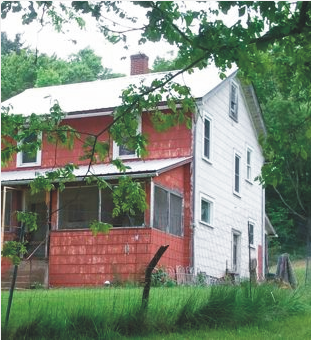 Summary of A Half-Painted House – A Memoir
Summary of A Half-Painted House – A Memoir
The summer before my high school senior year I started painting my family’s house, but once school began I put down the brush and never finished. Now, forty years later, my schizophrenic brother, who lives in a trailer with our mother, calls to tell me Mom has had a cardiac arrest. My husband and I head for their small, depressed town in rural western New York, where I had graduated high school. Stepping away from our comfortable, middle-class life in Ohio, we drive into an economically depressed part of the world studded with dilapidated houses, neglected cow pastures and junk-filled yards.
Responsibilities pile up, along with childhood memories of violence and verbal assaults: Dad’s sporadic physical abuse, Mom’s self-absorption and continual complaint that she wished her children had never been born. During the first week of our vigil, my estranged younger sister arrives from England. She provokes a bitter shouting match and then packs up and disappears. My parents divorced many years ago, and Dad now lives in Philadelphia. And when my husband has to fly home, I’m left to face Mom’s impending death alone, with only my mentally ill brother for support.
As Mom deteriorates in the ICU, I receive a crash course in food stamps and disability assistance as I try to find group housing for my brother. Meanwhile, I suffer conflicting feelings about losing my mother, who displayed peculiar, irresponsible behavior most of her life. At Mom’s funeral, one of her friends hands me bingo tokens in the form of little naked troll dolls to bury with her ashes. This bizarre memorial service, taken over by Mom’s small-town cronies, wraps up two weeks submerged in this backwoods subculture. I’m left to wonder if the adult life I forged for myself is a mirage. Have I really escaped this culture of poverty and violence? Or do I have the crazy gene?
Throughout the two weeks in upstate New York, memories reveal my fractured family as layered, complex people who could be disturbingly abusive one moment, and talented, tender and funny the next. We were a family straddling two cultures: a rural, almost hillbilly existence fraught with chaos and sometimes desperation, and a middle-class lifestyle that emphasized doing well in school, attending college, and having a career.
One afternoon, when I drive out to see our old house again, I discover my ancient painting project still incomplete. The half-painted house mirrors a lifetime of trying in vain to somehow fix my family, as the story traces my journey out of rural living and abuse and explores a choice critical to healing—-forgiveness.
